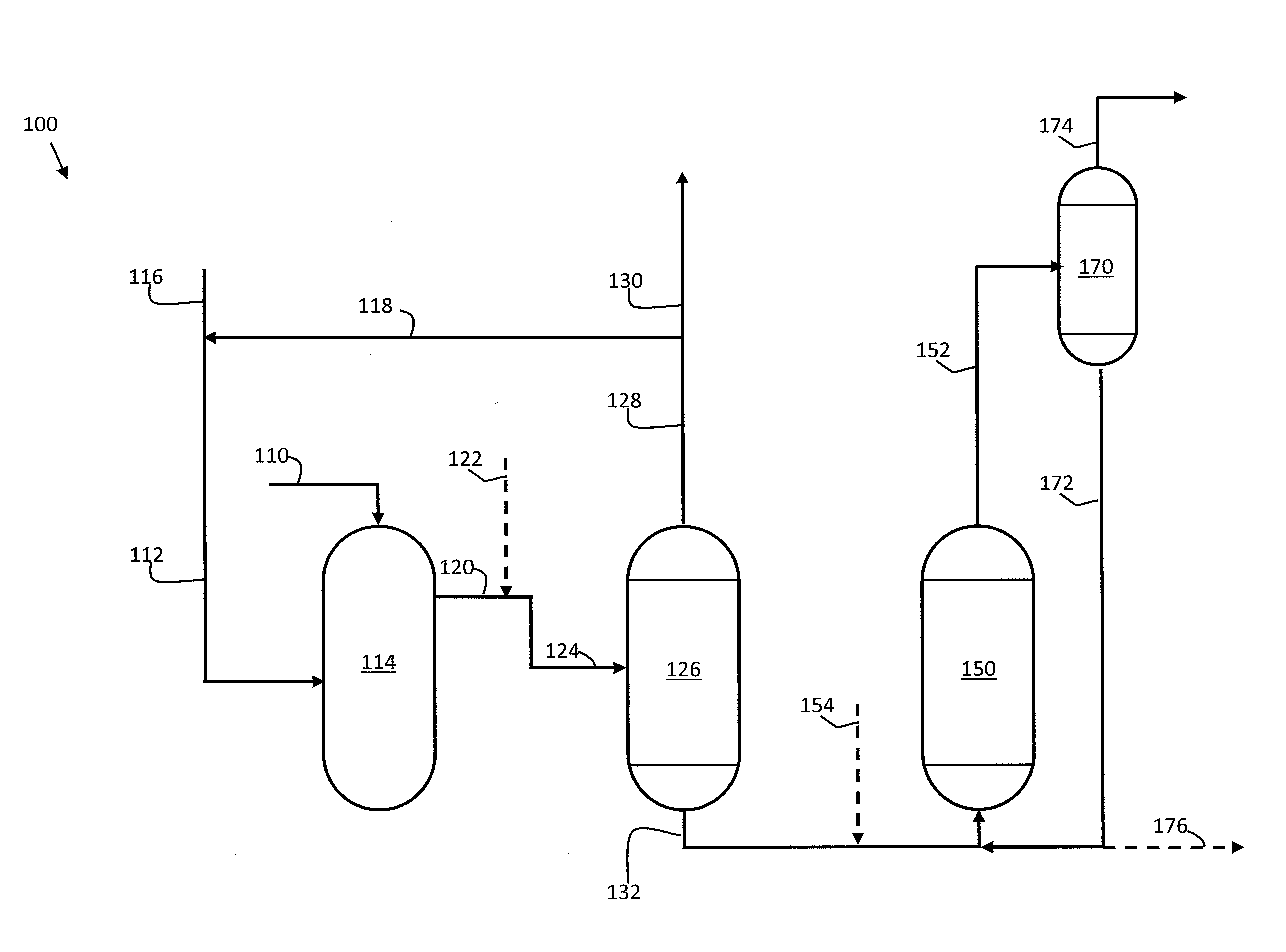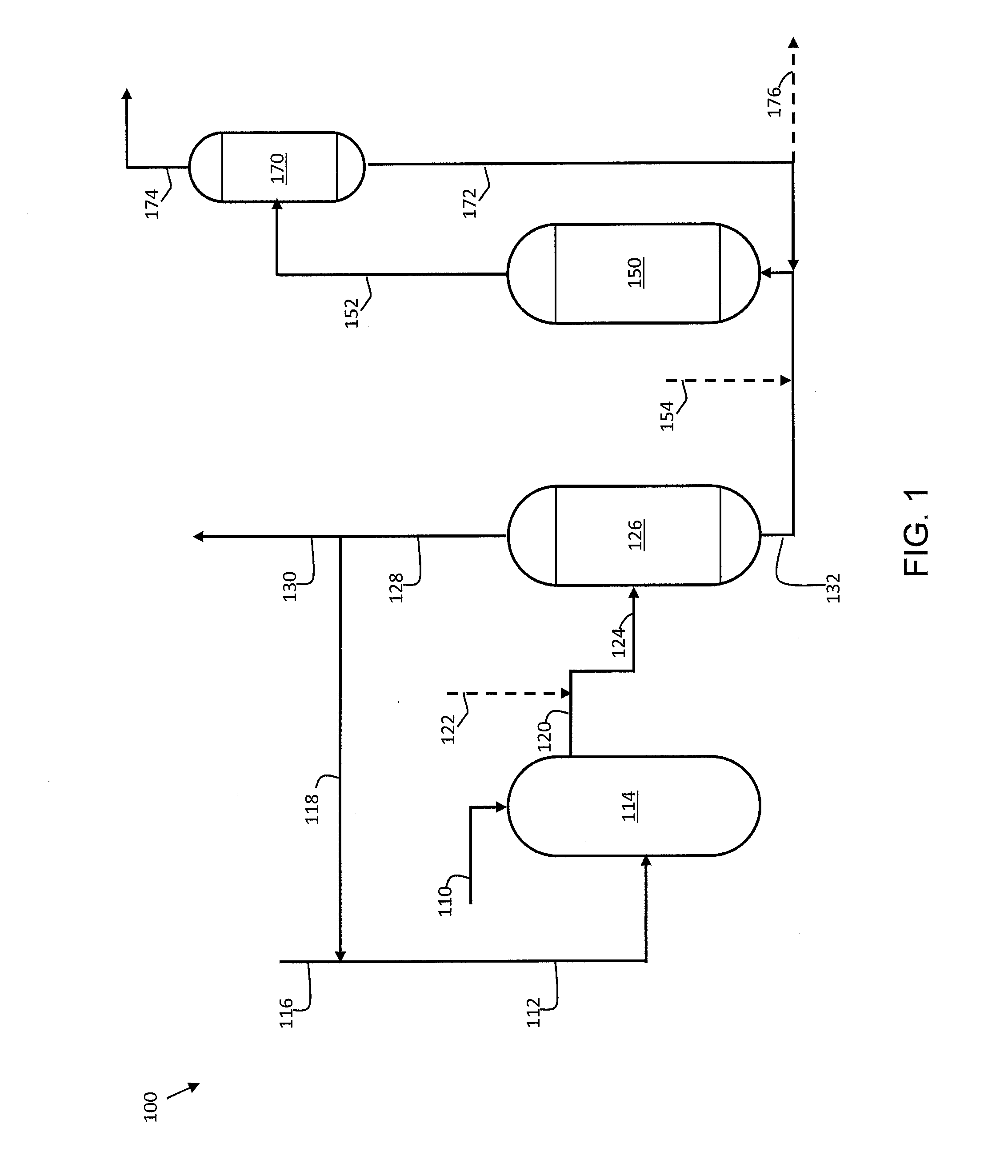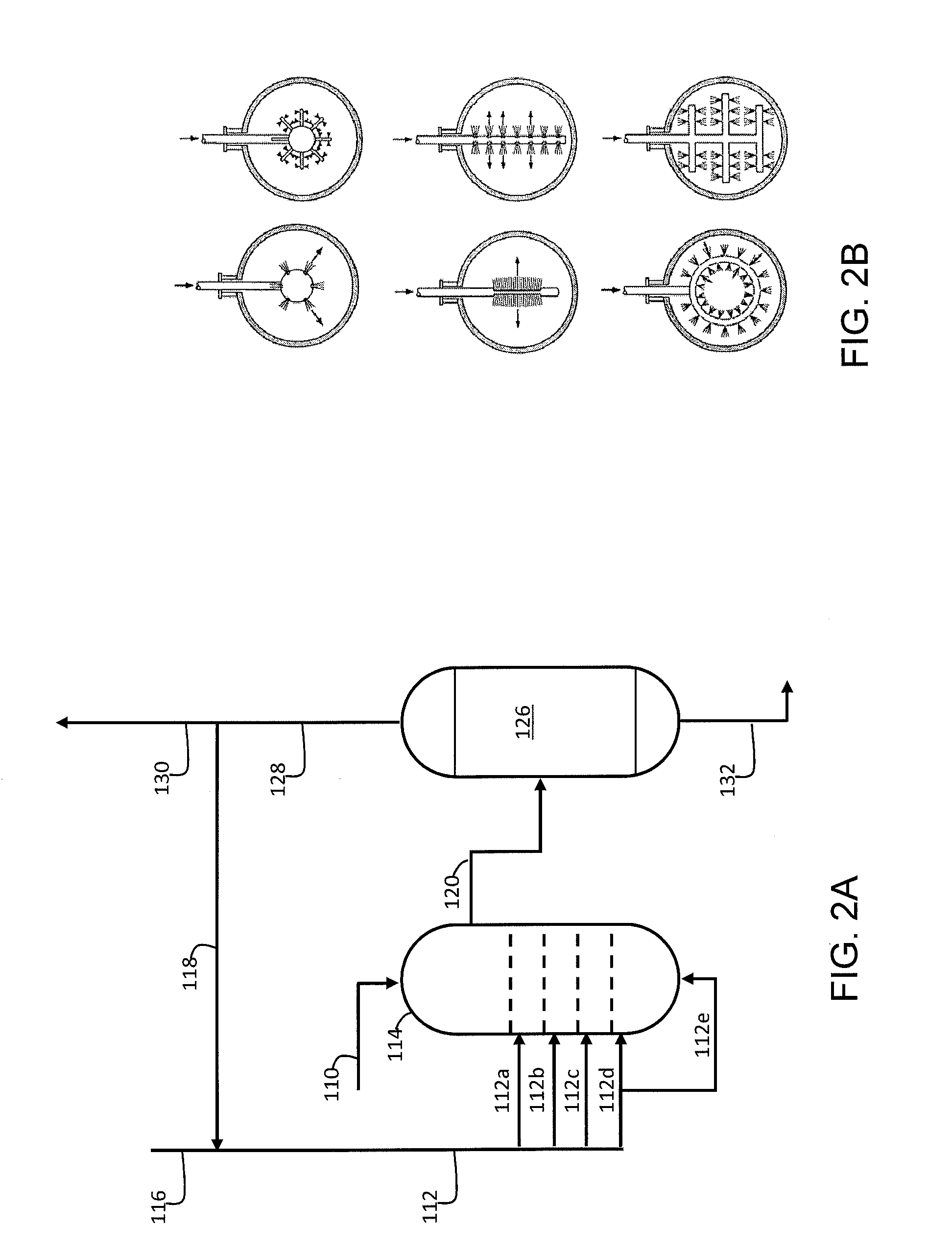Slurry bed hydroprocessing and system using feedstock containing dissolved hydrogen
a technology of hydroprocessing and slurry bed, which is applied in the direction of furnaces, lighting and heating apparatus, furnace types, etc., can solve the problems of less suitable fixed-bed technologies for treating relatively heavy feedstocks, high design costs, and commercial impracticality, and achieve the effect of reducing the overall reactor size requirements
- Summary
- Abstract
- Description
- Claims
- Application Information
AI Technical Summary
Benefits of technology
Problems solved by technology
Method used
Image
Examples
example
[0063]A vacuum residue derived from Arabian heavy crude oil, the specification of which is given below in Table 1, was hydrocracked in a slurry bed hydrocracking reactor unit at 420° C., 200 bars of hydrogen partial pressure, while passing 0.2 liters of oil per liter of reactor volume. The hydrogen was dissolved in the mixture of fresh feedstock and recycle oil from the reactor. The ratio of recycle oil to the fresh feedstock was 4.5:1.
TABLE 1Vacuum Residue FeedstockPropertiesUnitsValuesSpecific(g / cm3)1.0312GravityAPIgravity5.7500° C.+W %96ContentSW %5.28NW %0.45Ni / Vppmw52 / 170n-C7W %19.5asphaltenesCCRW %22.9
TABLE 2ProductYieldsW %GasC1-C4 + H2S8.7NaphthaC5-180° C.0.9Gasoil180-370° C.26.2Vacuum Gasoil370-520° C.30.5Unconverted Vacuum Residue520° C.+15.1Pitch500° C.+20.2Total101.6
[0064]As shown in Table 2, the total conversion of the hydrocarbons boiling above 500° C. was 85 W % and 82 W % of hydrodesulfurization was achieved in the process. In this example, the hydrogen dissolved in ...
PUM
| Property | Measurement | Unit |
|---|---|---|
| temperature | aaaaa | aaaaa |
| temperature | aaaaa | aaaaa |
| temperatures | aaaaa | aaaaa |
Abstract
Description
Claims
Application Information
 Login to View More
Login to View More - R&D
- Intellectual Property
- Life Sciences
- Materials
- Tech Scout
- Unparalleled Data Quality
- Higher Quality Content
- 60% Fewer Hallucinations
Browse by: Latest US Patents, China's latest patents, Technical Efficacy Thesaurus, Application Domain, Technology Topic, Popular Technical Reports.
© 2025 PatSnap. All rights reserved.Legal|Privacy policy|Modern Slavery Act Transparency Statement|Sitemap|About US| Contact US: help@patsnap.com



